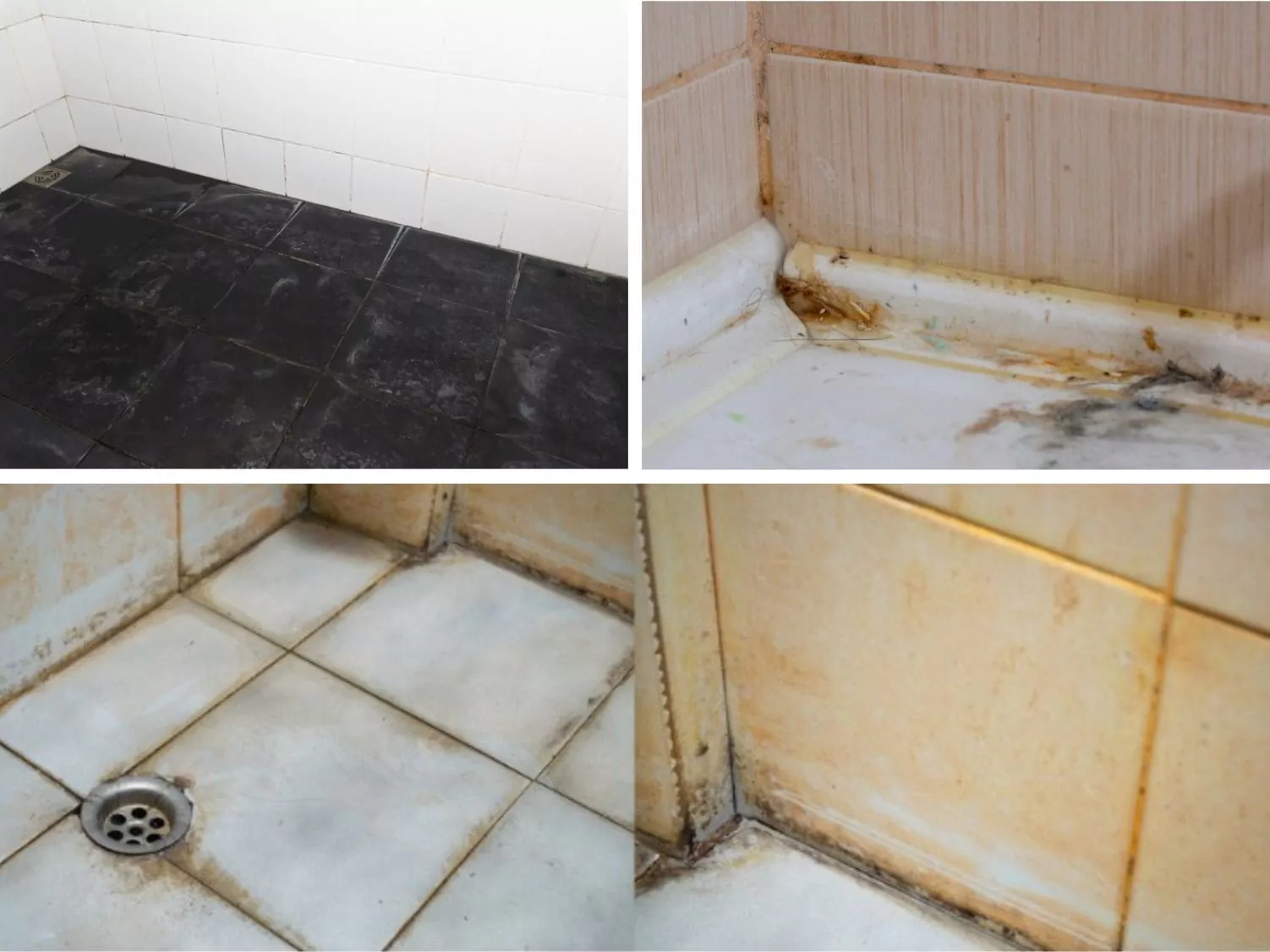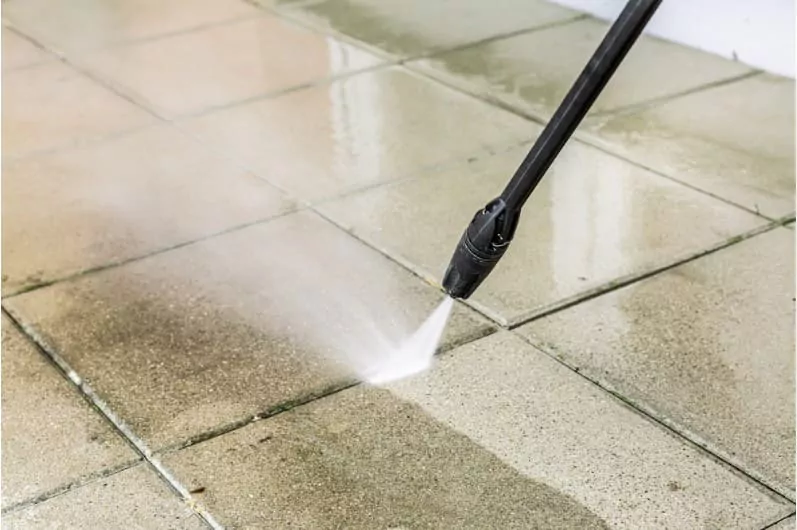How To Remove Stains From Bathroom Tiles?

When it comes to maintaining the pristine appearance of your home, one of the most challenging tasks can be figuring out how to remove stains from bathroom tiles. Over time, tiles can acquire unsightly spots from water, soap scum, mildew, and even rust, diminishing their lustre and making the bathroom seem less inviting. Yet, restoring your bathroom tiles to their former glory isn’t as daunting as it may appear if you equip yourself with the right knowledge and tools.
- Understanding the Types of Stains on Bathroom Tiles
- The Importance of Regular Cleaning
- How to Remove Stains from Bathroom Tiles: Step by Step
- Removing Soap Scum from Bathroom Tiles
- Eliminating Hard Water Stains from Bathroom Tiles
- Removing Mould or Mildew from Bathroom Tiles
- For Stubborn Stains: Try a Pumice Stone
- Professional Cleaning
- Prevention is Key: Keeping Your Bathroom Tiles Stain-Free
- Tips for Safe and Effective Cleaning
- Wrapping Up
1 Understanding the Types of Stains on Bathroom Tiles

Before we get into the details of how to remove stains from bathroom tiles, it’s crucial to understand the types of stains you’re dealing with. Different types of stains require different cleaning solutions. Commonly, bathroom tile stains fall into three categories: soap scum, hard water stains, and mould or mildew.
- Soap Scum: This is a filmy layer that forms on your bathroom tiles due to the reaction between the minerals in hard water and soap.
- Hard Water Stains: These are caused by the accumulation of minerals in the water, such as magnesium and calcium, which leave chalky white deposits on your tiles.
- Mould or Mildew: These are fungal growths that often appear as black, green, or grey spots on your bathroom tiles due to the high humidity levels in the bathroom.
Now that you understand the types of stains let’s dive into how to remove stains from bathroom tiles effectively.
2 The Importance of Regular Cleaning
Preventing stains from forming in the first place is the best approach. Regular cleaning can inhibit the build up of soap scum, mildew, and hard water deposits. Wipe down your tiles with a soft cloth after each shower to prevent water spots and soap residue from drying on the surface. Ensure proper ventilation to reduce humidity and deter mould and mildew growth.
3 How to Remove Stains from Bathroom Tiles: Step by Step
Even with diligent maintenance, stains can appear. Here’s your comprehensive guide on how to remove stains from bathroom tiles effectively.
Step 1: Gather Your Materials

Start by gathering all necessary materials. You’ll need:
- A soft cloth or sponge
- A scrub brush
- Cleaning solution (more on this later)
- Rubber gloves
Step 2: Identify the Stain
Identifying the type of stain is key to determining the best method for how to remove stains from bathroom tiles. Mildew or mould stains will require a different approach compared to hard water stains or soap scum.
Step 3: Choose Your Cleaning Solution
Next, choose the appropriate cleaning solution. You can opt for commercial products, but many effective solutions can be made using common household ingredients.
- For mould and mildew, a solution of one part bleach to two parts water is effective.
- For soap scum and water spots, a 50-50 solution of white vinegar and water can do the trick.
- For rust stains, a paste of baking soda and water can help.
Remember, always wear rubber gloves when handling these solutions to protect your skin.
Step 4: Apply the Cleaning Solution
Apply your cleaning solution directly to the stains on your bathroom tiles. Allow it to sit for 15-30 minutes to work its magic. This waiting time is crucial for loosening stubborn stains.

Step 5: Scrub the Stains Away
Using your scrub brush, gently yet firmly scrub the stained area. Scrub in circular motions for best results. Remember to be careful not to scratch the tiles.
Step 6: Rinse and Dry

Rinse the area thoroughly with warm water to remove the cleaning solution and dislodged stains. Then, dry the tiles with a soft cloth to prevent water spots from forming.
4 Removing Soap Scum from Bathroom Tiles
If soap scum is your nemesis, worry not. Here’s how to remove stains from bathroom tiles caused by soap scum:
Ingredients: White vinegar, warm water, a spray bottle, non-abrasive sponge.
Procedure: Mix equal parts of white vinegar and warm water in a spray bottle. Spray the solution liberally on the tiles and let it sit for about 10-15 minutes. This allows the acidity in the vinegar to break down the soap scum. After that, scrub the tiles gently with a non-abrasive sponge, then rinse with warm water. The soap scum should be gone, revealing clean, gleaming tiles.
5 Eliminating Hard Water Stains from Bathroom Tiles
When it comes to understanding how to remove stains from bathroom tiles, dealing with hard water stains can be slightly tricky. However, the following method is very effective:
Ingredients: Lemon juice or vinegar, baking soda, a spray bottle, a soft cloth or a sponge.
Procedure: Make a paste using baking soda and lemon juice or vinegar. Apply this paste on the tiles, focusing on the areas with hard water stains. Let the paste sit for about 10 minutes, allowing the acidity in the lemon or vinegar to break down the mineral deposits. After that, scrub the area gently with a soft cloth or sponge, then rinse with warm water. Your tiles should be free from hard water stains.
6 Removing Mould or Mildew from Bathroom Tiles
If you’re looking for ways how to remove stains from bathroom tiles caused by mould or mildew, here’s a reliable method:
Ingredients: Bleach, water, a spray bottle, and a scrubbing brush.
Procedure: Mix one part bleach with three parts water in a spray bottle. Spray the solution on the mould or mildew stains and let it sit for about 15 minutes. The bleach will kill the mould or mildew and lighten the stains. Scrub the area with a brush, then rinse with warm water.
Safety note: Always use gloves and ensure adequate ventilation when using bleach to protect your skin and avoid inhaling fumes.
7 For Stubborn Stains: Try a Pumice Stone
If you’re struggling with how to remove stains from bathroom tiles that are particularly stubborn, a pumice stone can be a useful tool. Be sure to wet the stone before gently scrubbing the stain. Note, however, that pumice should only be used on ceramic and porcelain tiles as it can scratch softer materials.
8 Professional Cleaning

If stains persist despite your best efforts, it may be time to call in professional help. A professional cleaner has access to stronger, industrial-grade products and tools that can tackle even the toughest stains. They also have the expertise to ensure your tiles aren’t damaged in the cleaning process.
9 Prevention is Key: Keeping Your Bathroom Tiles Stain-Free
Now that you’ve learned how to remove stains from bathroom tiles, the next important step is prevention. Here are some simple strategies to help maintain your tiles’ cleanliness:
- Regular Cleaning: Implement a weekly cleaning regimen. This inhibits the build up of soap scum and hard water deposits and prevents the growth of mildew and mould. A soft cloth or sponge and mild detergent are often all you need for this routine cleaning.
- Proper Ventilation: Ensure your bathroom is well-ventilated to prevent the accumulation of moisture that encourages mould and mildew growth. Use an exhaust fan or open a window during and after showers.
- Sealing Tiles and Grout: Seal your tiles and grout regularly to protect them from water and stain absorption. This is especially important for porous tiles such as natural stone.
10 Tips for Safe and Effective Cleaning
In your quest to learn how to remove stains from bathroom tiles, remember that safety and effectiveness go hand in hand. Here are a few tips to ensure both:
- Always Test Cleaning Solutions: Whether you’re using commercial products or DIY solutions, always test them on a small, inconspicuous area first to ensure they won’t damage your tiles.
- Avoid Abrasive Materials: Steer clear of abrasive tools or cleaners as they can scratch the tile surface, making it more prone to future staining.
- Don’t Mix Cleaning Products: Mixing different cleaning products can result in harmful fumes. For instance, combining bleach and ammonia creates a dangerous gas.
11 Wrapping Up
In conclusion, learning how to remove stains from bathroom tiles is not only about restoring your bathroom’s beauty but also about maintaining a clean and healthy environment. Regular cleaning, the correct identification of stains, and the use of appropriate cleaning solutions are all critical components of effective tile cleaning. With the comprehensive guide provided above, you’re now equipped to handle those stubborn stains and keep your bathroom tiles looking as good as new.
Remember, if the stains persist despite your best efforts, don’t hesitate to call in professional help. Not only can professionals handle stubborn stains, but they can also provide you with additional tips and tricks on how to prevent future staining. Happy cleaning!
Community Q&A
About This Article
This article has been viewed 454 times.



